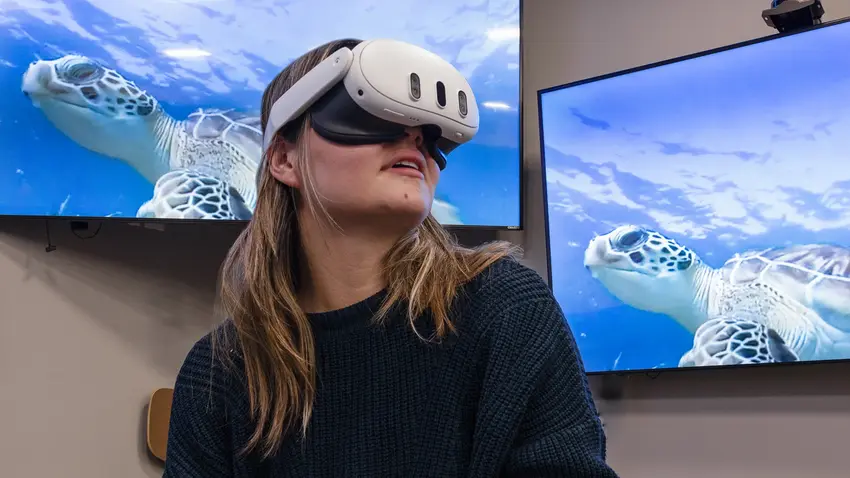Mixed Reality in 2025
Last updated 2025-07-23
Welcome to Blackview blog.

In the ever-evolving world of technology, Mixed Reality (MR) has become a key point of convergence between our physical environment and the digital world. By blending elements of Augmented Reality (AR) and Virtual Reality (VR), MR offers immersive experiences that transcend the limitations of traditional screens. As we step into 2025, this hybrid technology is rapidly maturing, transforming industries and redefining user interaction.
With tech giants investing heavily in MR headsets, spatial computing, and AI-enhanced interfaces, the future of MR is no longer speculative—it is unfolding in real time. Enterprises, educators, healthcare providers, and content creators are all exploring MR’s full potential to create more intelligent, interactive, and intuitive environments.
In this guide, we will explore how Mixed Reality is evolving in 2025—from the most promising use cases and enabling technologies to the challenges that still need to be overcome. Whether you're a developer, decision-maker, or enthusiast, this in-depth analysis is designed to give you a grounded understanding of where MR is heading.
Let’s dive into the layered world of Mixed Reality and uncover the innovations, trends, and real-world applications that are making headlines in 2025.
1. The Rise of MR Hardware Ecosystems
In 2025, hardware advancements are at the core of Mixed Reality’s evolution. Leading tech firms such as Apple, Meta, Microsoft, and Samsung have launched next-generation MR headsets that feature advanced spatial tracking, retinal resolution, and seamless connectivity. These devices are no longer niche gadgets; they are becoming mainstream computing platforms.
- Apple’s Vision Pro 2 introduces gesture-only interaction with eye-tracking precision.
- Meta’s Quest XR offers an affordable, high-FOV alternative for enterprise and education.
- Samsung’s Galaxy MR integrates with Galaxy AI, enhancing real-time environment mapping.
2. AI as the Backbone of MR Experiences
Artificial Intelligence is not just an add-on but the foundation of many Mixed Reality experiences in 2025. AI enables context-aware computing, spatial audio, intelligent object recognition, and personalized interfaces that learn user behavior. This symbiosis between AI and MR makes digital overlays more responsive, relevant, and reliable.
- AI-driven avatars provide real-time interaction in virtual workspaces.
- Generative AI tools create immersive MR environments without manual modeling.
- Multimodal AI enhances interaction through voice, gesture, and gaze input.
3. Industry Applications Redefining Productivity
In sectors like healthcare, manufacturing, retail, and education, MR is moving from experimentation to implementation. Businesses are reporting measurable improvements in training efficiency, customer engagement, and operational safety. The ability to visualize complex data and collaborate in real-time is reshaping how teams work and solve problems.
- Surgeons use MR overlays for live, data-rich guidance during operations.
- Retailers implement virtual showrooms that boost customer conversions.
- Engineers perform hands-free inspections using MR-guided workflows.
4. Challenges: Fragmentation, Privacy, and Adoption
Despite its progress, Mixed Reality faces several hurdles. Platform fragmentation and lack of universal standards make app development complex. Privacy concerns around persistent spatial data and biometric tracking remain unresolved. Moreover, widespread adoption is still hindered by cost, ergonomics, and the need for continuous connectivity.
- Different MR platforms often require separate SDKs and frameworks.
- Spatial data can unintentionally record private environments.
- Battery life and comfort are still limitations for long-term use.
As we progress through 2025, it’s clear that Mixed Reality is not a passing trend but a transformative computing paradigm. With improved hardware, smarter AI integration, and industry-specific use cases leading the way, MR is gradually embedding itself into our daily workflows and entertainment ecosystems.
However, its ultimate success depends on cross-industry collaboration, standardization efforts, and an emphasis on ethical design. Developers and businesses who embrace these principles will not only shape the MR future but define how humans experience technology in the decade ahead.
- Build inclusive MR experiences with accessibility in mind.
- Invest in AI transparency and privacy-by-design frameworks.
- Focus on user comfort and hybrid experiences that blend physical and digital seamlessly.
Related,






